I am not the first to embark on this journey and I am sure I won’t be the last in the ethers of this great wide internet thing. But the reason so many have done this is because it’s a damn good idea.
I’m planning to cook a dish from every country in the world and document it. This was mostly prompted by being stuck at home (like the rest of the world) and not being able to go out and explore the great international cuisine in New York City.
This probably won’t be the last time I let you all know that I am not a chef. And aside from one, I am not from any of these countries whose cuisines I am attempting to take on. So apologies up front for butchering any traditional recipes or making any dumb novice cooking mistakes.
I’m sure I did both on my first official challenge, which was cooking the national dish of Afghanistan.
THE CUISINE
Technically, Afghanistan is not part of the Middle East but rather in Central Asia bordering Iran, Pakistan, Turkmenistan, Uzbekistan, Tajikistan, and China. In cuisine, it shares a little bit with most of its border nations and a good deal of influence from India.
Meat, especially chicken and lamb, is featured prominently in most dishes alongside the major grains of the country: rice, barley, wheat, and corn. The dish I am making (see below) is part of a collection of traditional recipes bearing the name “pulao” which refers to cooking the meat or vegetables with long grain rice (usually basmati).
You’ll also see lots of meat stews and kababs. These are found all over New York at Afghan restaurants (see my favorites below).

In a similar fashion to Persian cuisine, you’ll find the nation’s local fruits and nuts (especially pomegranates, apricots, cherries, walnuts, and almonds) featured in many of the dishes.
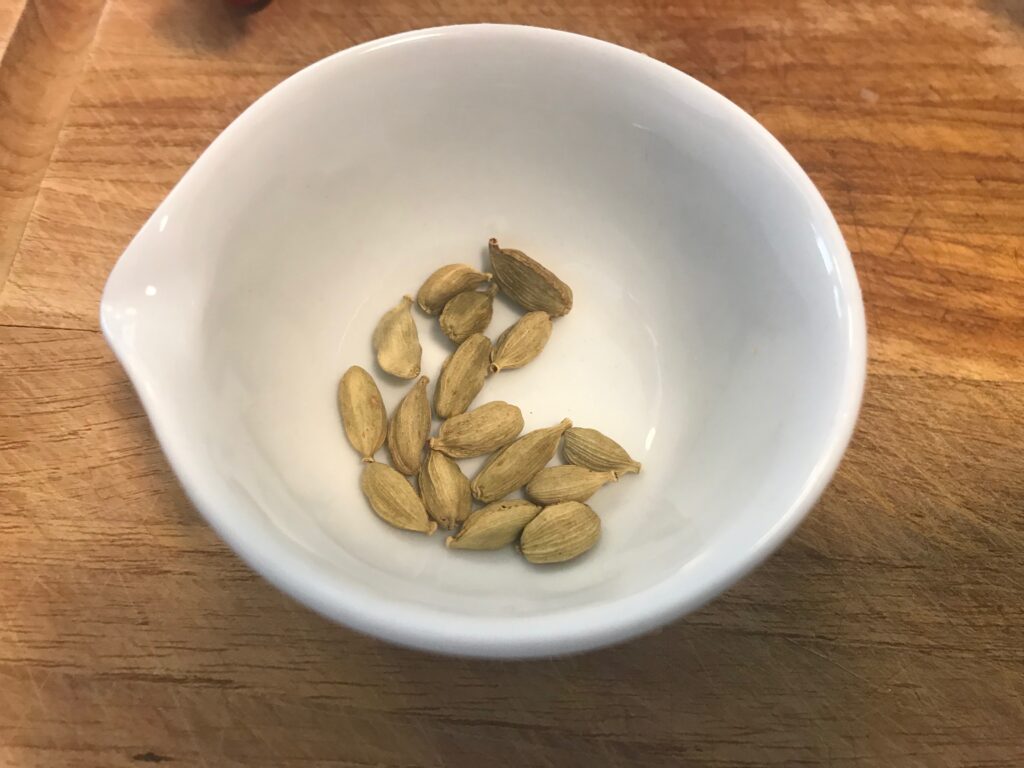
Spices are also used liberally, but my parents (and anyone else who are spice sensitive) will be pleased to know the heat is not strong, but rather savory and rich.
In Afghan homes, it’s traditional to eat sitting on the floor on a traditional rug using a disterkhan (think tablecloth) on the floor to present the food which is eaten communally. It is also traditional to eat with your hands (but only your right hand).
I thought about rolling out a “disterkhan” on the floor and doing things as traditional as possible, but we have very little room in our apartment plus we are really trying to introduce Sam to the idea of eating with a fork. This might have sent the wrong message.
THE DISH

I’m not sure the proper way to spell the name of this national dish. In Dari (one of the national languages of Afghanistan), it is called قابلی پلاو.. So when translating it into English, there are some variants. Let’s go with Kabuli Pulao (although don’t be surprised to see Qabuli Palaw or Pilao or Palau).
So when spelling it as Kabuli, it hints at the capital city of Afghanistan (Kabul), but from what I learned when it is spelled Qabali that actually means “possible” in Dari. So it is possible to make one of the many variations of this dish and to spell it different ways with different meanings.
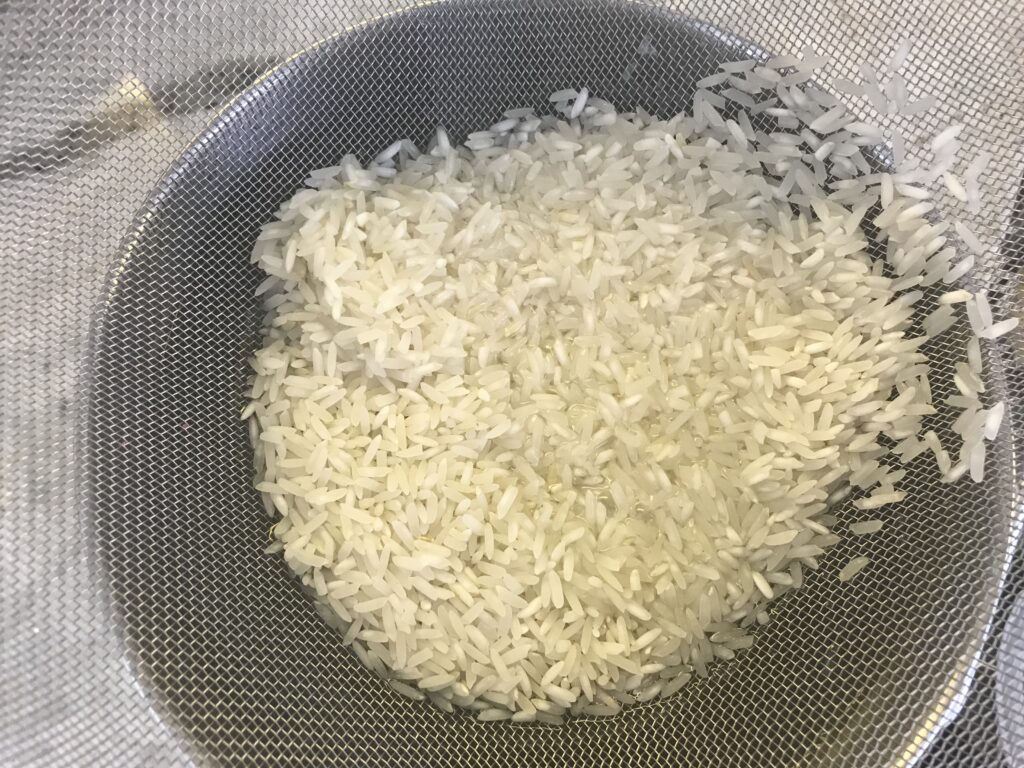
There is no question that the second part (Pulao) refers to a dish composed of rice. Not so far from the word “pilaf”.
Kabuli Pulao is a layered spiced rice dish usually with meat (lamb seems to be most common) and topped with a crown of caramelized fruits and vegetables (like raisins, carrots, and almonds).
Due to the expense and luxury of some of those ingredients, Kabuli Pulao is considered a special occasion meal. I am not oblivious to how lucky I am to be able to go to the corner bodega and pick up raisins for just a few dollars on any weekday evening.
It is also supposedly a determination of your wiving skills. Evidently, if you have a perfect Kabuli Pulao, you will be a perfect wife. Too bad I screwed this one up (as you’ll read below)!!
THE VIDEO
For those of you tuning into this adventure more for my adorable three year old son than me or the actual food, don’t worry, he’s coming soon.
He makes a few appearances in this first episode, but really gets into it come Episode 2 – I promise. This first one was new for everyone so he was unsure and I was unsure. Hopefully you won’t be unsure too.
AFGHAN FOOD IN NEW YORK
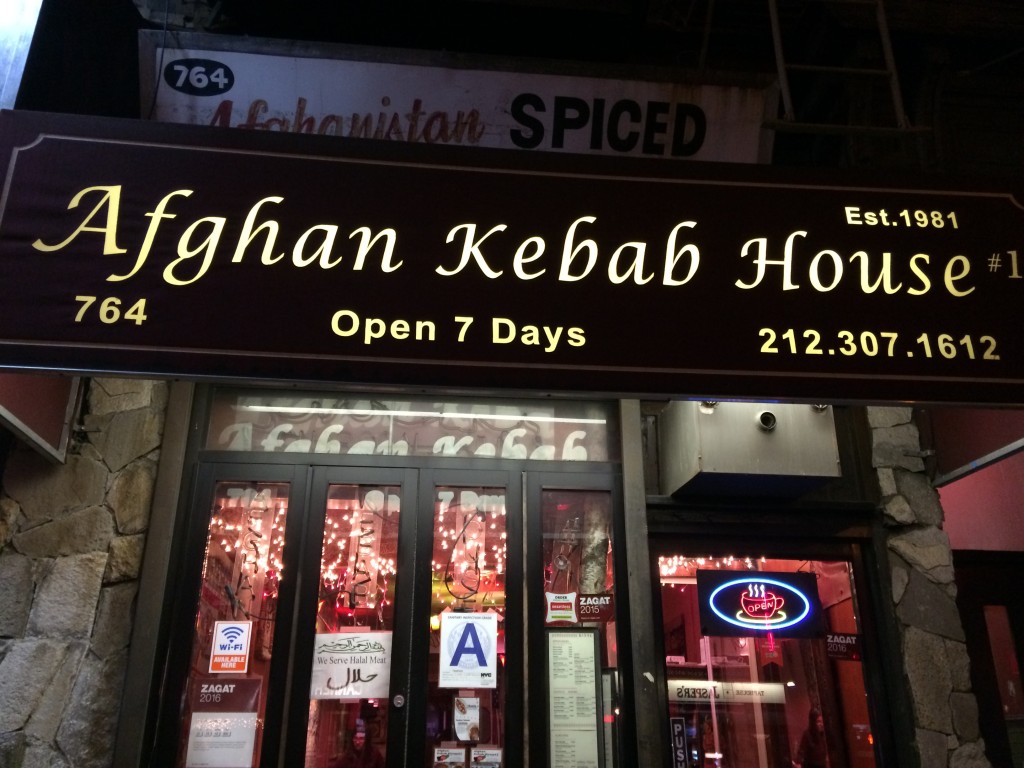
I’ve tasted Afghan cuisine quite a bit around the city, most notably at both of the well-known restaurants on Ninth Avenue in Hell’s Kitchen. Ariana and Afghan Kebab House. Both were great affordable, unique options for pre-theater (which is really the only reason I found myself in that neighborhood at dinner time).
At those restaurants, I mostly stuck with their well-known kebabs or ventured into the vegetarian curries, especially the intriguing pumpkin option and some of the appetizers, like Manto Dumplings or the fried eggplant known as Baudinjan Buranee.
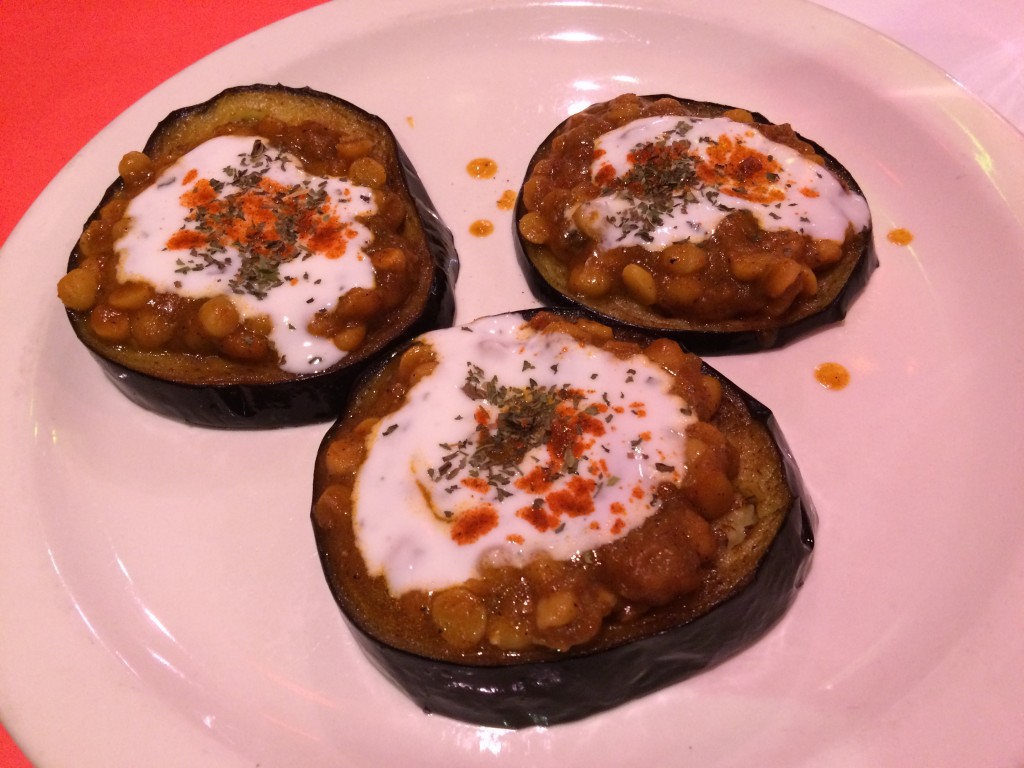
Somehow on all those visits, I missed the large array of Kabuli Palow options, which I learned is the national dish of Afghanistan. So I decided to try to make it myself.
I did try a version of palow at the now closed Bamiyan many years ago. It was the Shireen Palow which is a sweeter version featuring orange peel and saffron topped with juicy chicken kabob.
You can also sometimes find Afghan food hidden among the glut of halal food carts around the city. I used to be very partial to this one we used to feature on our food car tour, but unfortunately for us, the owner decided to go back to school and close up the cart. You can almost taste the food through the video below.
HOW I SCREWED IT UP
So this wasn’t so bad for my first attempt at a country’s national dish. The biggest problem here is I adapted this from a recipe (thanks Afghan Culture Unveiled) calling for chicken and I should have really thought that through since I was using lamb.
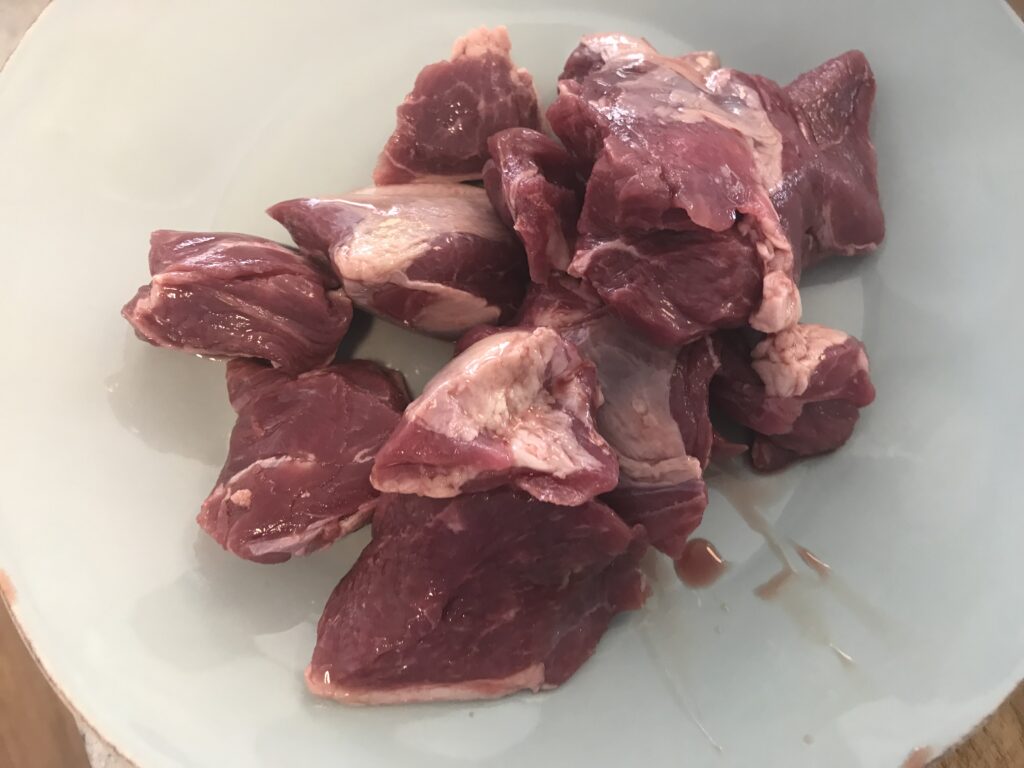
I chose lamb because it is certainly the more popular protein in this part of the world and we eat chicken all the time in this house. Of course. lamb (at least this cut of lamb) takes much longer to cook and become tender and soft than chicken. Needless to say I underestimated the time and the method and so my lamb was cooked through but chewy and tough.
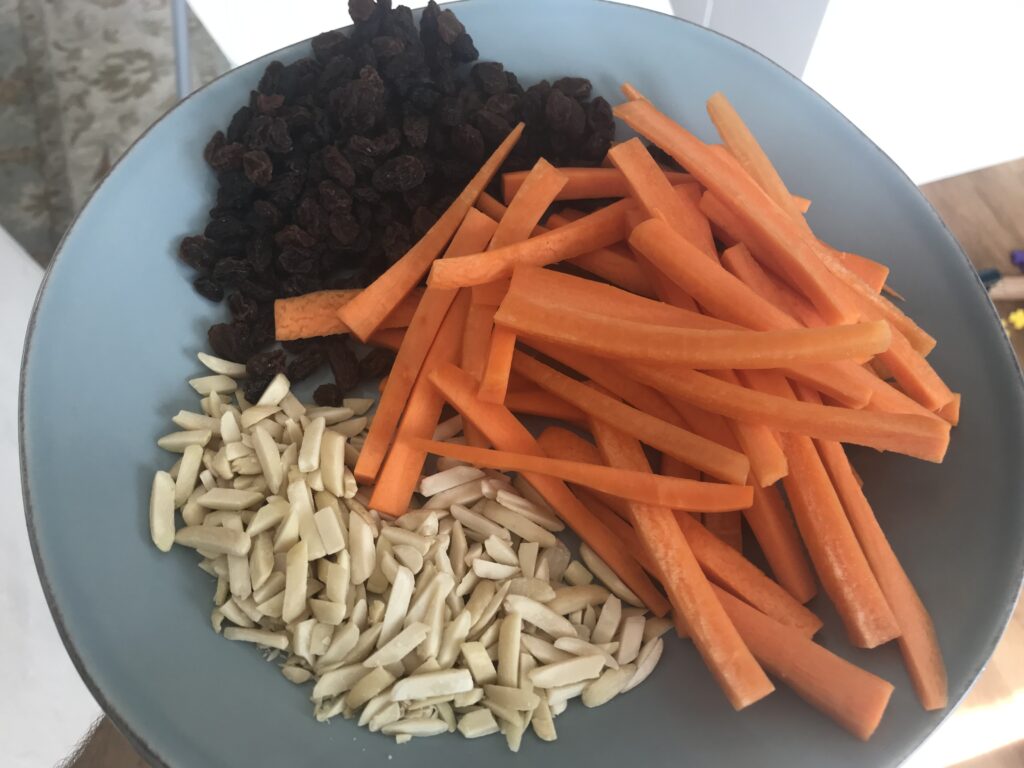
The rice, however, was perfectly moist and the addition of the candied carrots, raisins, and almonds was spot on.
THE RECIPE
Although I’ve worked around food for decades, I would not qualify myself as a chef. And I wanted to get these recipes as authentic and traditional as possible. So I turned to the internet, which is a tricky thing. Like digging through restaurant reviews, you have to dig deep before settling on a potentially authentic authority.
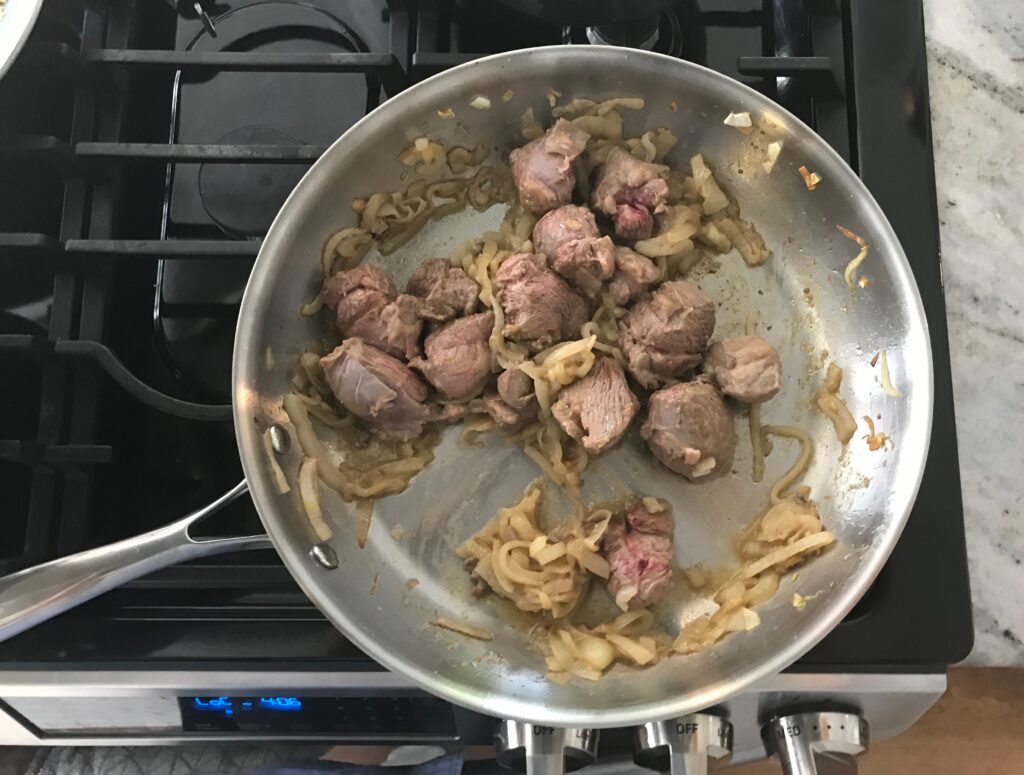
I found lots of interesting recipes and decided to use some tips from many. The bulk of my recipe came from the website Afghan Culture Unveiled. But while she used chicken for this recipe, I was determined to use lamb.
Below is the recipe I put together after having tweaked a bit to account for my mistakes.
Kabuli Pulao from Afghanistan
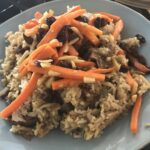
The National Dish of Afghanistan is a layered spiced rice dish usually with meat and topped with a crown of caramelized fruits and vegetables. It's considered a luxurious dish often reserved for special occasions. It's a bit labor intensive but worth the effort – sweet, meaty, and incredibly satisfying.
Meat
- 1.5 pounds lamb meat (shoulder or leg)
- 1 cup lamb or beef broth
- 2 yellow onions (sliced)
- 2 tbspn olive oil
- 2 tspn salt
Spices
- 1 tspn cumin seeds (or ground cumin)
- 1 tspn cardamom seeds (or ground cardamom)
- 2 garlic cloves (minced)
- 1/2 tspn black pepper
Toppings
- 2 carrots (peeled and cut into matchsticks)
- 1/2 cup raisins
- 1/2 cup slivered almonds (toasted)
- 1.5 tbspn sugar
- 1 tbspn olive oil
Rice
- 2 cups basmati rice
Meat
-
Preheat oven to 400° F.
-
Season the lamb with 2 teaspoons of salt.
-
Heat 2 tablespoons of olive oil over medium high heat. Add sliced onions and cook until translucent. Add lamb and cook until browned. Add broth and boil. Lower the heat to a simmer, cover, and cook for about 30 minutes.
-
When lamb is mostly tender, remove it and set aside.
Toppings
-
Meanwhile, boil 1/2 cup of water and add carrots. When tender (about 5-7 minutes), add 1 tablespoon of olive oil, raisins, toasted almonds, and sugar. Lower heat to medium and continue stirring until sugar and liquid evaporate.
-
Put mixture into aluminum foiland carefully fold into a pouch.
Spices
-
If using seeds, grind or crush the cumin and cardamom. Add to broth along with black pepper and garlic. Stir and cook on low for another 5 minutes.
Rice
-
Rinse rice and add to 3 cups of water and boil. Once boiling, bring heat to low and cover. Let steam for about 10 minutes. Do not cook the rice all the way. Drain rice.
-
Add the rice to the onion/spice mixture. Add lamb back to pot. Add the foil pouch. Cover the pan and put it into the oven. Cook for 15 minutes. Then drop the temperature to 250° F and cook for another 20 minutes.
-
When finished, plate with lamb pieces on the bottom, top with rice and sauce and finish with the caramelized toppings. EAT!!
SAM’S REACTION
To me, the most important part of this journey is to have my three year old son Sam try food from all over the world. But as luck would have it, he is at an age where he is a very picky eater. He loves rice and meat and sweet things, so I thought this would be a home run.
It eventually was, but it took some time for him to get there. He did find the lamb chewy (he’s very perceptive) but loved the rice. And for some reason he wouldn’t touch the sweet raisins and carrots. Maybe it was a little too colorful for him?
But I am proud I got a “Yum!” out of him.
NEXT WEEK

We’re working through the countries alphabetically so you can figure out what the following country will be by doing a quick Google search. But I’ll save you a minute: Albania. There will be more lamb and this time Sam will be involved in the cooking process. Stay tuned…
And be sure to check out the video series that goes along with this adventure.
In the comments, let me know if you’ve ever tasted Afghan food and what your favorite dishes are. Or if you have any suggestions for future recipes, I would love to hear your thoughts.

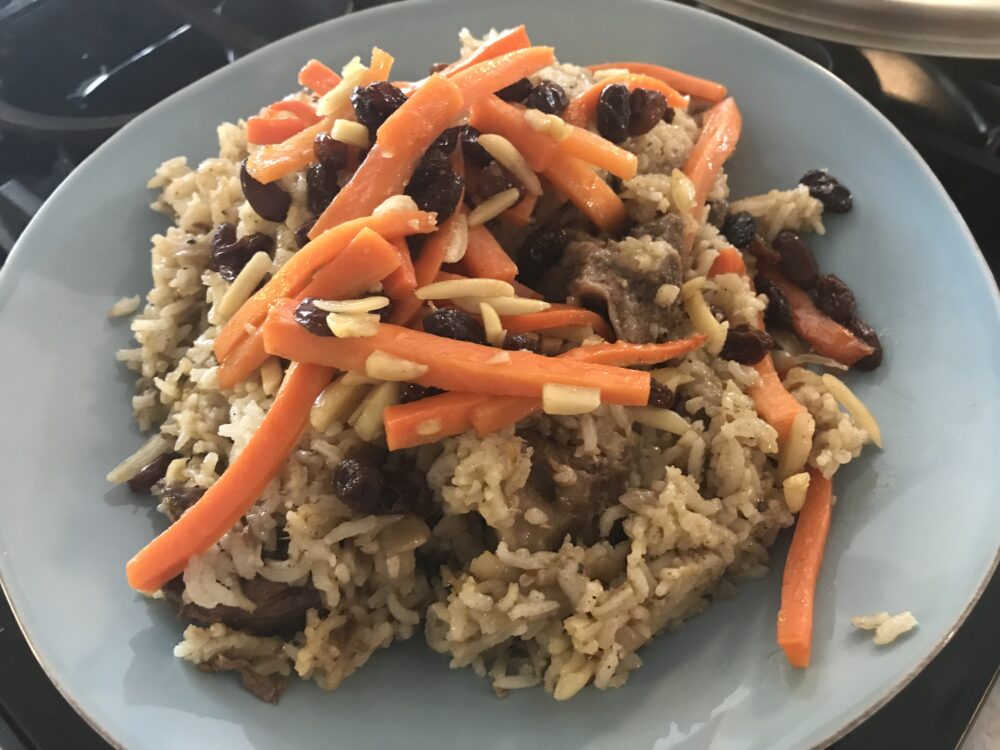

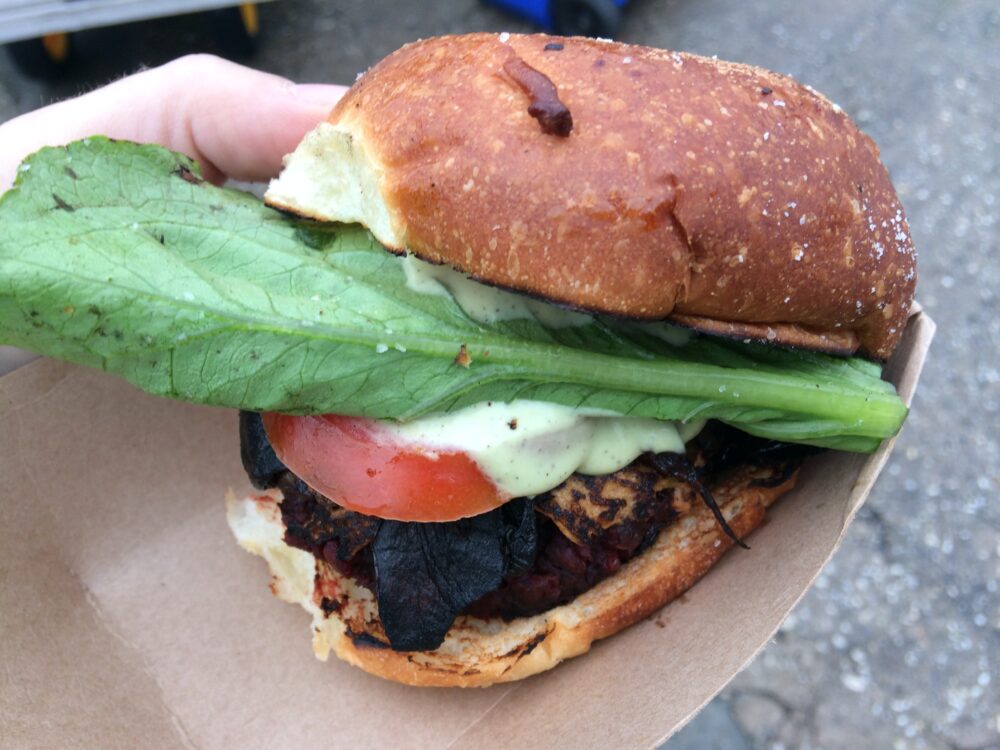

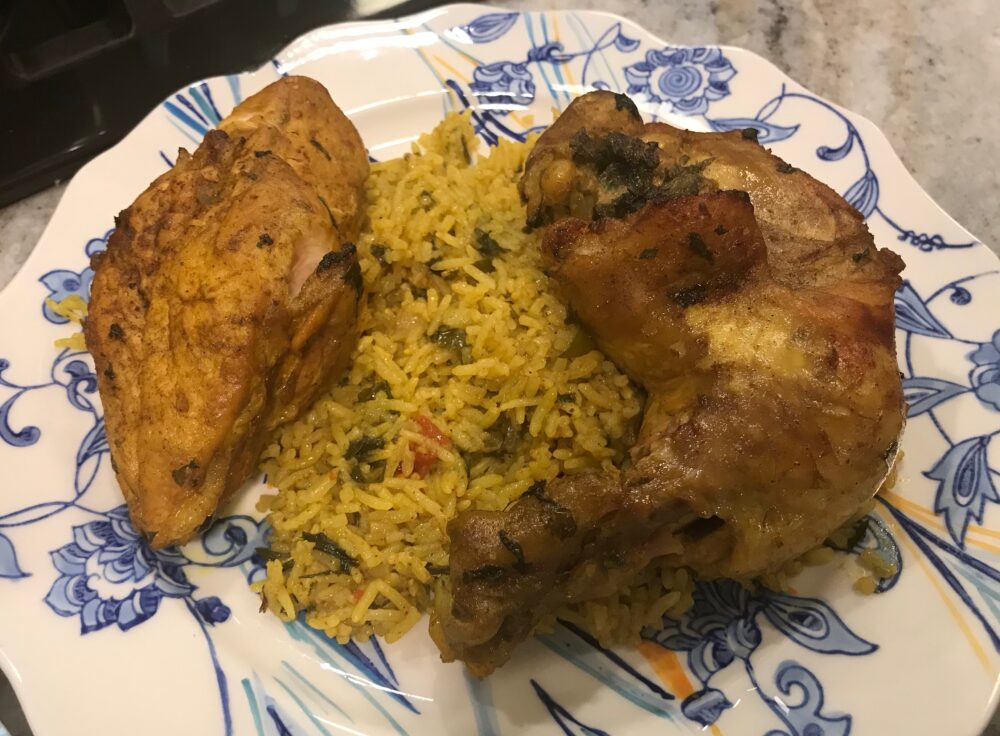

Thanks for doing this series, I’m looking forward to the rest!
I’ve had Afghani food a few times in a restaurant in the SF Bay Area, including Kabuli Pulau. I’m actually a big fan of their pumpkin dishes, and also the manti (dumplings).
Thanks so much, Lonni! Love the pumpkin dishes too. We’ll have to look for some Afghani restaurants next time I’m in the SF area!